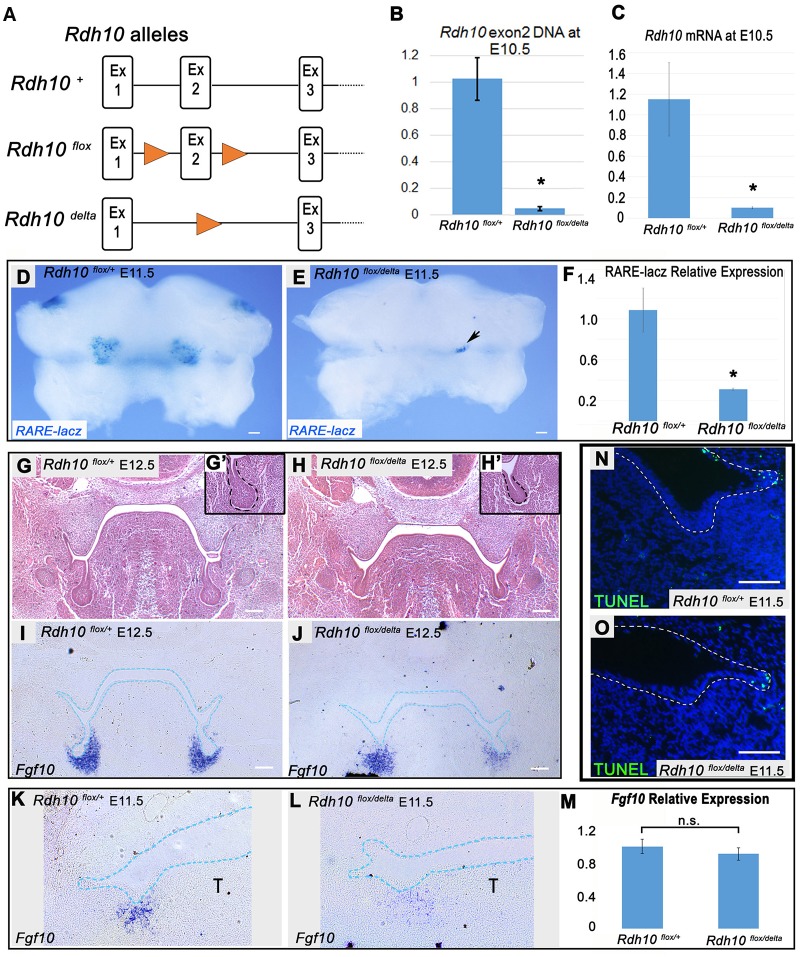Fig. 3.
Conditional inactivation of Rdh10 impairs SMG initial bud formation in vivo. (A) Rdh10 alleles used in conditional Rdh10 knockout cross. (B,C) qPCR of intact Rdh10 DNA (B) and Rdh10 RNA (C) from whole embryos at E10.5, 48 h after E8.5 tamoxifen administration, demonstrating the efficient conditional inactivation of Rdh10. (D,E) Whole-mount RARE-lacZ staining of E11.5 mandibles from Rdh10flox/+ control and Rdh10flox/delta conditional mutant embryos carrying the RARE-lacZ reporter transgene treated with tamoxifen at E8.5. Black arrow indicates a small region of residual RARE-lacZ staining in mutant embryos. (F) qPCR of RARE-lacZ gene expression from embryo bodies reveals that mutants retain 30% of the RA signaling activity (n=4 Rdh10flox/+;RARE-lacZ, n=2 Rdh10flox/delta;RARE-lacZ). *P<0.05. (G-H′) Frontal sections of E12.5 embryos stained with Hematoxylin and Eosin show defects in SMG initial gland bud formation in Rdh10flox/delta conditional mutants (H) relative to Rdh10flox/+ controls (G). Insets show higher magnification view of the initial bud (G′,H′). Dashed line outlines the oral epithelium. (I-L) Fgf10 RNA in situ hybridization of frontal sections through the SMG pre-bud of Rdh10flox/+ control (I) and Rdh10flox/delta conditional mutant (J) embryos at E12.5 (n=3 embryos each) and E11.5 (K,L) (n=3 embryos each) (blue dotted lines outline the epithelium). (M) qPCR of Fgf10 expression in whole E11.5 mandibular arches reveals no significant difference between control and Rdh10 conditional mutants (n=3 embryos each). (N,O) TUNEL staining of frontal sections through the SMG pre-bud at E11.5 reveals no difference in apoptosis in SMG initiation region between control (N) and Rdh10 conditional mutants (O) (n=3 embryos each). n.s., not significant; T, tongue. Scale bars: 100 µm.

